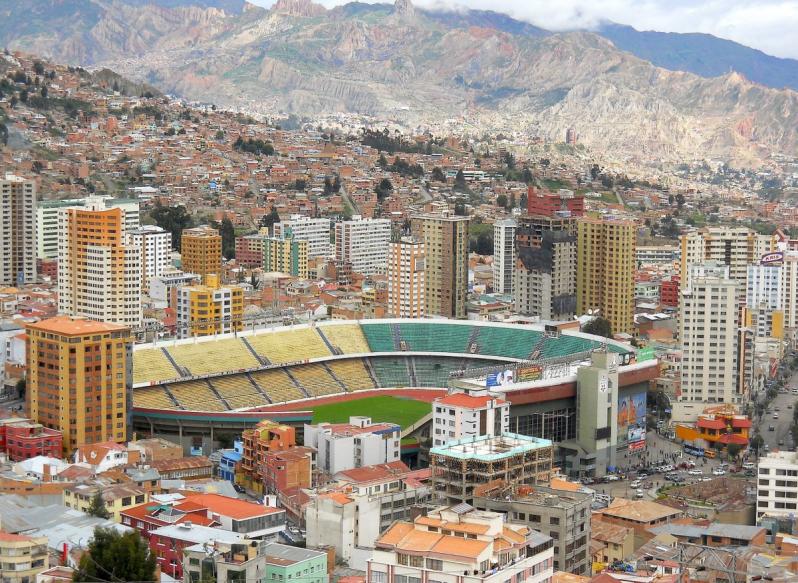Going on the road to try and capture three points, or even to salvage a draw, is never an easy assignment in soccer. The difficulty in playing aggressively against the home side is encapsulated in the away goals rule, a method of rewarding the away team for any attacking achievement in the match.
Whether it’s the benefit of home support, the psychological boost of familiar surroundings or the disadvantages away teams suffer from traveling to different time zones or climates, your home ground provides you with a significant advantage over the visitors.
In soccer, these advantages are particularly pronounced. On six separate occasions the World Cup has been captured by the host country. The Times found that, in the English Premiership, a home team can be expected to score 37.29% more goals than the away team. So, which side benefits from having the toughest home stadium in all of world soccer?
The Most Intimidating Soccer Stadium In The World
Barcelona’s 99,354 capacity Camp Nou is certainly worthy of a shout. It’s hulking, generally filled to capacity and a symbol of Catalan pride. However, Barcelona’s dominance at the Camp Nou is over-reliant upon the brilliance of its team. Old Trafford in Manchester, England, is another historic venue that springs to mind, but the “Theatre of Dreams” has its fair share of critics with regards to atmosphere.
There’s one stadium in world football that boasts a raucous home support (41,143 capacity), familiarity and history (the stadium opened in 1931) and the undeniable home field advantage of playing matches at an altitude of 11,932 feet above sea level. For comparison, the Colorado Rapids, the MLS side that resides near the Mile-High City of Denver, plays at an altitude of 5,201 feet, not even half the altitude of this stadium.
The North Base Camp of Mount Everest, in Tibet, is at an elevation of 16,900 feet. Basically, your a lot closer to playing your games on Mount Everest than you are to playing at sea level here.
The stadium we're speaking about is none other than the Estadio Hernando Siles in La Paz, Bolivia. Home to Club Bolivar, The Strongest, La Paz F.C. and the Bolivian national team, the exploits of all these sides pale tremendously when away from home.

Photo: @MotherSoccerNL | Twitter
Named after the 31st President of Bolivia, the thin air in the stadium can make opponents feel dizzy without moving. Angel di Maria, Lionel Messi and Javier Mascherano visibly suffered during their 2013 match against Bolivia, requiring oxygen masks while complaining of dizziness and headaches.
The Bolivian national team has been ranked as low as 115 in the FIFA rankings. They’ve participated in three World Cups, compiling a record of zero wins, fives losses and one draw. Their combined goal difference at those tournaments is a resounding minus 19. Unfortunately for Bolivia, their Copa America record isn’t much better, except for at home.
At home in La Paz, Bolivia are world beaters. They handed Brazil their first qualifying defeat in 40 years back in 1993. In 2009, they inflicted the heaviest defeat Argentina had suffered in over 60 years. Six months after that historic victory, Bolivia repeated their 1993 heroics by once again defeating Brazil in World Cup qualifying.
They captured their first and only Copa America triumph in 1963, the tournament being hosted in Bolivia, of course. In 1997, the Copa came back to Bolivia for the second time. Bolivia played every home game at the Estadio Hernando Siles, winning five straight matches before losing to Brazil in the final.
At an altitude of 11,932 feet, Estadio Hernando Siles sits at what's classified as very high altitude. At moderate altitude, mild altitude illness and decreased performance may occur. At high altitude, illness and performance decrements are more common. At very high altitude, altitude illness and decreased performance is the rule.
Without the necessary two weeks to acclimatize to the altitude, visiting teams carry less oxygen in their systems while their heart rate speeds up. Goals in the games final fifteen minutes become common place for Bolivia while opponents complain of “hitting a wall” at the end.
Bolivia’s advantage was contested by FIFA in 2007. On May 27, 2007, FIFA ruled that the Estadio Hernando Siles constituted both an unfair advantage and a health hazard. They proceeded to ban matches in stadiums above 8,200 feet.
The ruling by FIFA affected matches in Colombia, Bolivia, Ecuador, Peru and Mexico. Latin America was rightly outraged by the ban, calling it discrimination against Latin America’s high-altitude nations.
Bolivian president Evo Morales called the ruling an injustice against not only Bolivia but sport as a whole. “He who wins at altitude, wins with dignity,” Morales said. “He who fears altitude has no dignity.”

Photo: @FootballStadia1 | Twitter
With the Hernando Siles stadium used as a symbol in the struggle against FIFA’s ban, the world’s governing body eventually raised the altitude limit while announcing a special exemption for the Estado Hernando Siles.
Bolivia’s advantage at home remains remarkably significant. Over the course of the 2006, 2010 and 2014 World Cup qualifying campaigns, Bolivia compiled ten home wins and eight draws. On the road, they recorded only two draws and no wins. In qualifying for the 2018 World Cup, Bolivia’s record reads played four, won one and lost three. You can probably guess where they got their win.
The best part about Bolivia’s indomitable fortress? It has a ghost.





